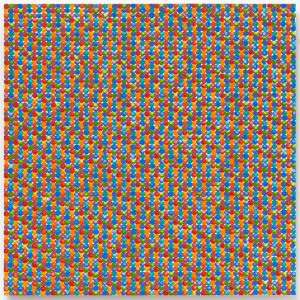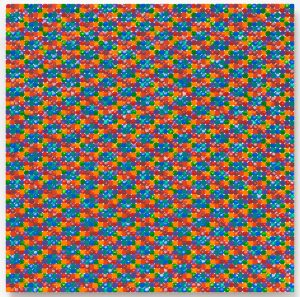
Dóra MAURER
As You Like 12
- Year(s)
- 1990
- Technique
- acrylic on wood
- Size
- 2 pcs / 114x133 cm together
Artist's introduction
Although Dóra Maurer's work is seemingly related to Constructive-Concrete artistic tendencies, her artistic position can be understood much more along an internally evolving creative process founded on a coherent logic. The medially diverse oeuvre spans more than five decades and is organised around the central notion of the observation of movement and dislocation. Since her graphic artworks created in the 1960s, the intention to observe and make these processes visible emerges as a unifying notion that connects her photographic work in the 1970s and her paintings from more recent years. From the 1980s, Maurer's artistic practice moved increasingly towards easel painting. In this period, she painted several linear grids utilising different colours. Later she shifted the pictorial planes of the respective grids. She then depicted this raster grid deploying a shaped format in the Quod Libet series. She projected this linear network into space in the Buchberg project, which she finished in 1983. While working on this project, she noticed that the perception of colour constantly changed due to the room's variable lighting conditions. By utilising various cold and warm tones, Maurer focused on this phenomenon while working on her paintings from the 1980s to the 1990s. Maurer's work as a painter, as her entire practice, deals with human perception and attempts to make the inherent cognitive processes visible. Zsófia Rátkai
More artworks in the artist's collection »
















